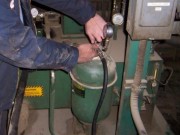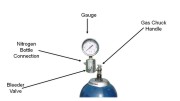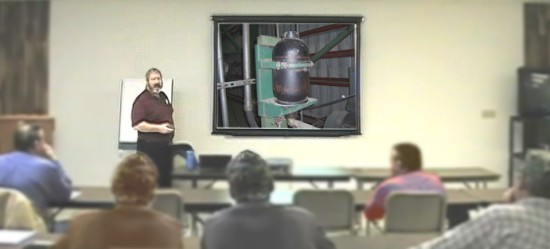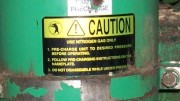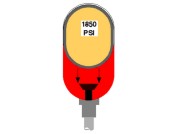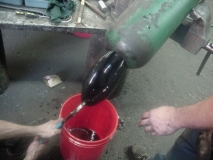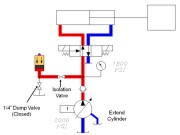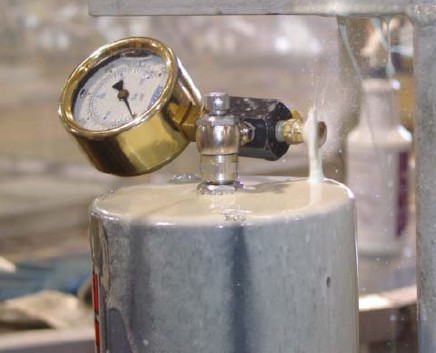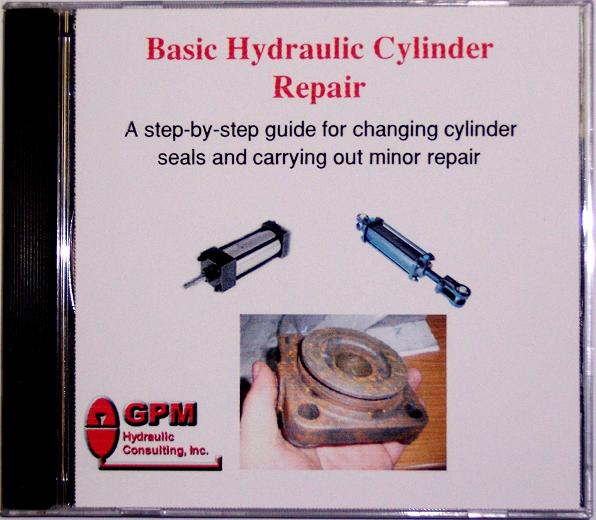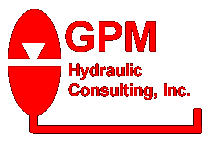
P.O. Box 1376
Monroe, GA 30656
(770) 267-3787 gpm@gpmhydraulic.com
For an archive of past newsletters, please visit:
http://www.GPMHydraulic.com/newsletter_archive/
CLICK HERE to send this newsletter to a friend!
|
'Troubleshooting Hydraulics' Newsletter |
||||
|
||||
|
In This Issue |
||||
1. Your Most Valuable Troubleshooting Tool 2. What You Don't Know About Hydraulic Accumulators Can KILL You! ***NEW!*** Accumulator Safety DVD 3. Nominal, Absolute and Beta Ratings - What is the Difference? 4. Call GPM for Emergency Hydraulic Troubleshooting 5. 2010 Public Maintenance Hydraulic Troubleshooting Workshop Schedule |
 By Jack Weeks
By Jack WeeksTroubleshooter or Parts Changer?
Troubleshooting hydraulic machines is our specialty. We have been teaching technicians how to troubleshoot hydraulics since 1994 across the United States, Canada and even in South America. Each of us has met thousands of people responsible for maintaining their machines, but only a handful of them could be called troubleshooters. The vast majority of our students are parts changers when we meet them. Very competent parts changers, to be sure - but parts changers nonetheless, not troubleshooters. Students often come to our classes expecting to learn how to repack a cylinder or rebuild a pump and are surprised to find that we teach none of that. That is hydraulic repair - not hydraulic troubleshooting. There are plenty of classes that teach hydraulic repair - we presume that a company already has someone on staff or a contractor who can perform repairs on their machines. Troubleshooting is different. Before a machine can be repaired, it must be diagnosed. The diagnostic skills are the ones we find lacking, not the repair skills. Most of our students are highly qualified in hydraulic repair. But when it comes to diagnosing the problem, they typically rely on their experience. Usually this means replacing the part that caused the same symptoms the last time they appeared. Often, this repairs the machine. But sometimes it doesn't. When it doesn't, our parts changer will continue to replace parts - sometimes at random - until the machine is either back up and running normally or in such a state that someone (like us) must be called. And usually by the time we are called, a lot of parts changing has occurred. Often, what began as a relatively simple problem has grown into multiple issues during the course of changing parts.
Troubleshooting from the Schematic
When speaking of hydraulic troubleshooting tools, most people are talking about "black boxes". Devices that can be added to a machine to tell us information - gauges, flow meters, test boxes, etc. Make no mistake, these are valuable tools. Most hydraulic machines lack tools such as these and, when strategically placed, they can pay for themselves in short order. But the most valuable of them all is the hydraulic schematic. Without the schematic, troubleshooting is difficult if not impossible.
Most hydraulic machines are built with the power supply some distance from the actuators - often on a different floor. And it is a rare machine that has all of its hydraulic connections visible from a single vantage point. Tracing hydraulic lines is laborious and frustrating. During periods of lost production, precious time is wasted tracing even a simple flow path. More and more machines are being built with components mounted on a manifold and the hydraulic connections are internal and impossible to trace. But with the schematic, all of the flow paths through the machine are visible. The best five minutes you will ever spend troubleshooting a hydraulic machine will be spent tracing the flow on the hydraulic schematic.
Sweat vs. Results
"TheBoss doesn't want to see people reading schematics, he wants to see people working on the machine." This is a common response when I tell people to troubleshoot from a schematic. It's true that it is more comforting during an outage to see wrenches being turned than to see people poring over schematics. But this mentality must be overcome - nothing should be replaced on the machine unless we have good reason to believe it is bad. Unnecessary component replacement costs time and money (same thing) and exposes the machine to contaminants, adding a problem in the near future. Before anything is replaced on the machine, determine from the schematic if it could be causing the symptoms that are displayed. Eliminate the components that don't fit the profile described by the symptoms.
"We Don't Have any Schematics!"
Actually, you probably do. On countless site surveys I have been told that there are no schematics to a machine, but eventually they are located. It has just been so long since they have been used that no one knows where they are kept. They probably exist, you just need to find them. But if you really don't have any schematics, call us. We can draw them for you and they will pay for themselves the first time you use them to troubleshoot the machine.
"I Don't Know How to Read a Hydraulic Schematic"
This is common. Few people know how to read a hydraulic schematic and use it as a troubleshooting tool. Again, call us. In three days, we can teach you how to read a schematic and use it to troubleshoot any hydraulic machine. This training pays for itself the first time it is used to diagnose a machine.
"Our Schematics are Out of Date"
This one is a little easier. When modifications are made to a machine, it is crucial that the schematics be updated to reflect them. If you can read a schematic, you can update one when changes are made.
"Does the Ability to Read Schematics Make Me a Hydraulic Troubleshooter?"
No. That is only one of the learning objectives, though it is certainly the most critical. There are four things you need to know to be a hydraulic troubleshooter:
- 1. The function of every component on the machine. If you don't know what a component does, you have no way of knowing if it could be causing your problem or not.
- 2. How to read the schematic and use it as a troubleshooting tool. Know all of the symbols so you can recognize each component on the machine, understand how it is connected and if its failure could cause the symptoms that are displayed.
- 3. How to troubleshoot the individual component, preferably without removing it from the machine. Changing a component just to see if it will fix the machine is taking a chance. Changing ANY component, for that matter, is taking a chance - of contaminating the machine and causing another failure. Even if you are changing the right component, you still might contaminate the machine, so don't take the chance unless you have good reason to believe that the component you are replacing is bad. Use the techniques we teach to troubleshoot components while they are still installed.
- 4. How to properly adjust the machine. Often a machine fails because it is improperly adjusted. I have lost count of the number of times I have driven several hours or flown across the country to tell someone to make an adjustment. Learn how to adjust the machine properly for maximum performance with minimum energy consumption.
These four objectives are the crux of our hydraulic troubleshooting classes. Without them, you are a parts changer, not a troubleshooter.
|
The nominal rating really doesn't mean much. At best, it means that a filter with this rating will indeed stop some particles of the given size or greater from going through the element. This is an arbitrary micrometer rating given by the manufacturer of the filter. It doesn't mean that particles greater than the size of the nominal rating won't go through the filter - in fact, often particles many times that size can be pushed through. Discard the nominal rating altogether - it tells us nothing useful about a filter being used for hydraulic oil.
The absolute rating tells us a bit more. Essentially, the absolute rating is the size of the biggest particle that can be forced through the filter. In other words, it is the size of the biggest "hole" in the element. It's better than the nominal rating, but there is no standard for measuring its accuracy - and no accountability for the entity that determines the rating.
The most reliable method of filter rating is the beta rating. The beta rating of a filter is a ratio of the number of particles upstream of a filter vs. the number of partcles downstream of a given size. The standard of measurement is governed by the ISO (International Organization of Standards), an organization of 156 countries that determines standards for everything from thread depths to bank routing numbers worldwide. The measurement is made by using particle counters upstream and downstream of a filter. So the b10 rating of 35 for the filter mentioned above would be determined as shown below:
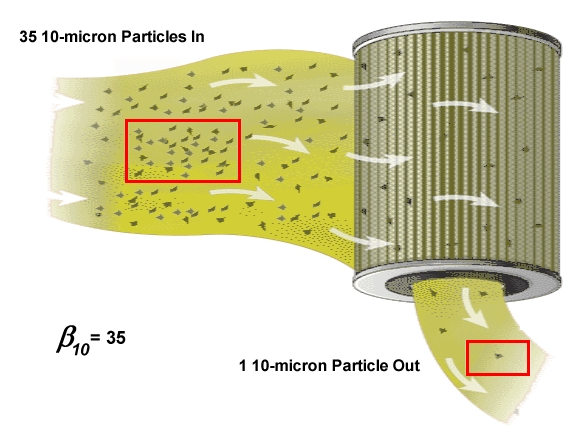
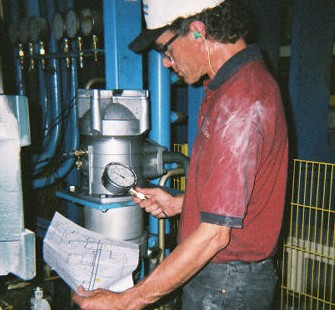
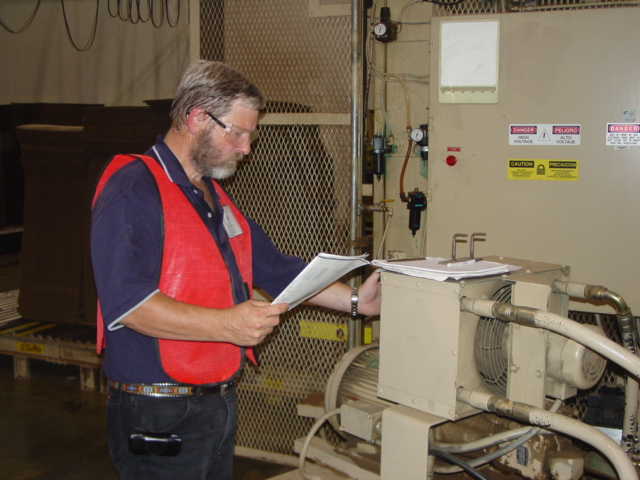
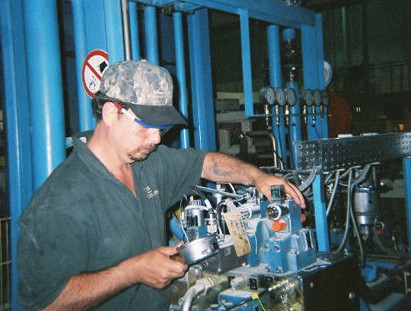
Nothing is more expensive than unscheduled down time. GPM’s customers know they can call whenever they have a troubleshooting issue they simply can’t resolve. With over 50 years experience dealing with hydraulic failures, our consultants have the resources to help troubleshoot whatever hydraulic problem you encounter. Whether you’re experiencing a total system outage, repeated component failure or just need a professionally designed preventive maintenance schedule, the consultants at GPM can help. Call GPM for
In-plant Troubleshooting
Leakage Problems
Pressure Settings
Shock Problems
Preventive
Maintenance Scheduling
Hydraulic Troubleshooting Manual Development
Startup
Consulting and Recommendations
Heat
Problems
Repeated
Component Failures
Speed Problems
Do you want to learn more about how GPM can help you? Go to http://gpmhydraulic.com/troubleshooting.htm
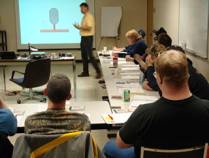
Maintenance Basic Hydraulic Troubleshooting
2009
3 Day Workshop
Registration
Fee Only $895.00 Per Person
Three
for the Price of TWO!
Every Third Registrant Attends for FREE!
Early Registration -
$845.00 For Confirmed Reservations
Booked 21 Days Prior to the Start of the Workshop
Call (770) 267-3787 To Register
Learn More About Our Maintenance Basic Hydraulic Troubleshooting Course
2010 Maintenance Basic Hydraulic Troubleshooting Schedule
Date
*Don't see your city listed? Call If You Would Like To See A Workshop Scheduled In Your Area!
(770) 267-3787
If you've found our newsletter informative and beneficial please click here to tell your co-workers and friends.
A step-by-step guide for changing cylinder seals and carrying out minor repair. The manual contains disassembly, inspection of parts, minor repair, assembly, examples of seal failures and their causes, hydraulic cylinder speeds, metric/inch conversion table, fluid power formulas, rod and piston groove diameters.
$24.99 + Shipping & Handling
Site Index
[Home] [Our Training] [Hydraulic Consulting] [Safety Webinars] [System Flushing] [Our People] [Downloads and Multimedia] [Testimonials] [Hydraulics Quiz] [GPM Store] [Upcoming Events] [Contact Us]
GPM Hydraulic Consulting,
Inc.
Box 1376
Monroe, GA 30655
(770) 267-3787



